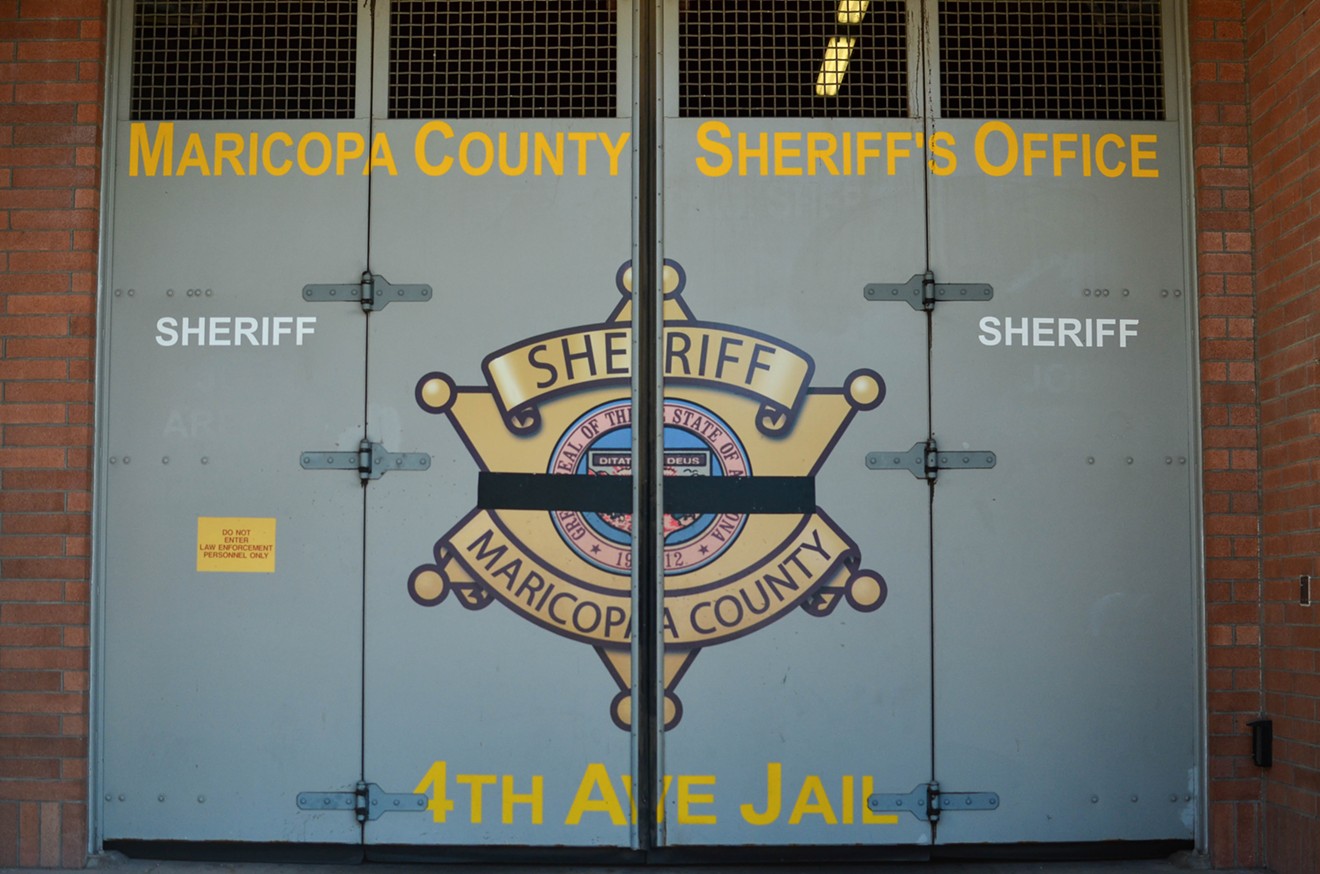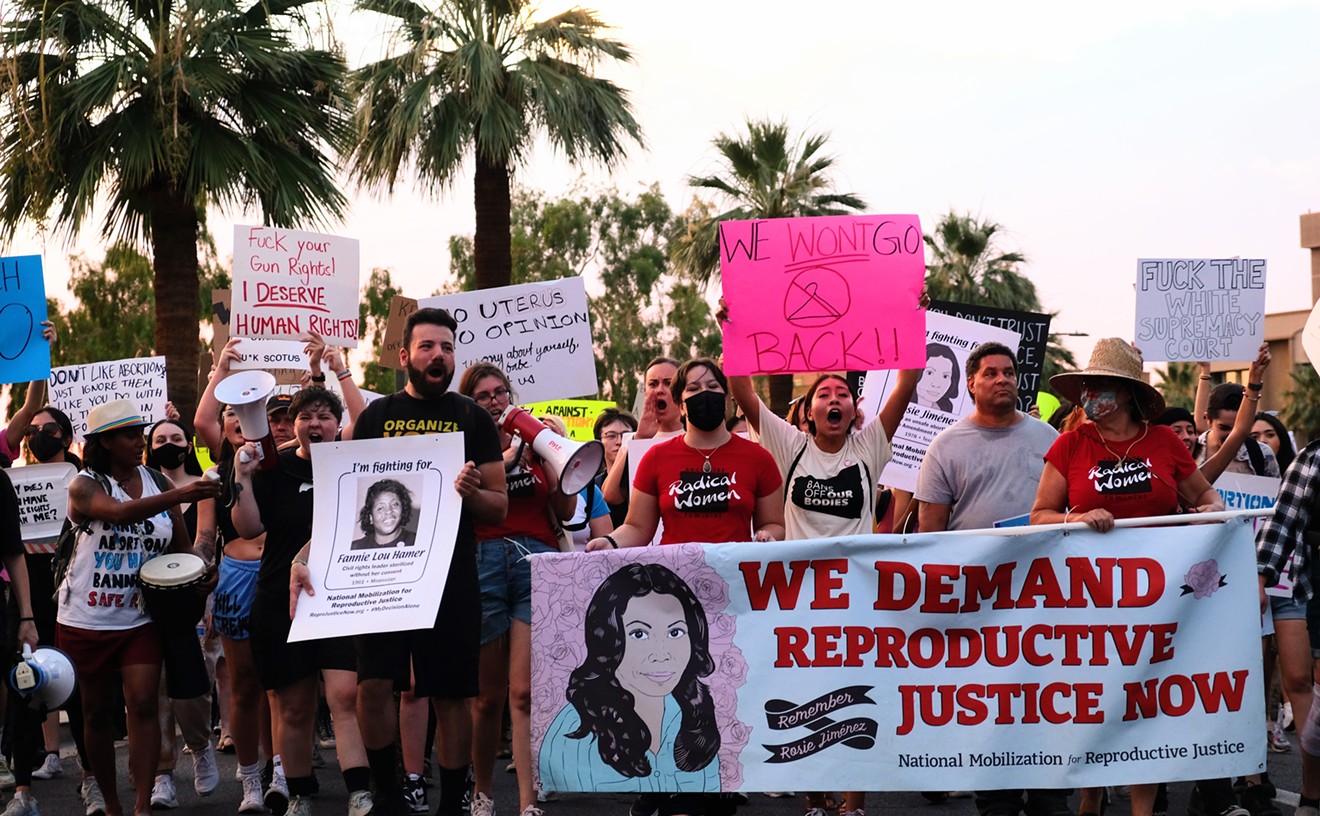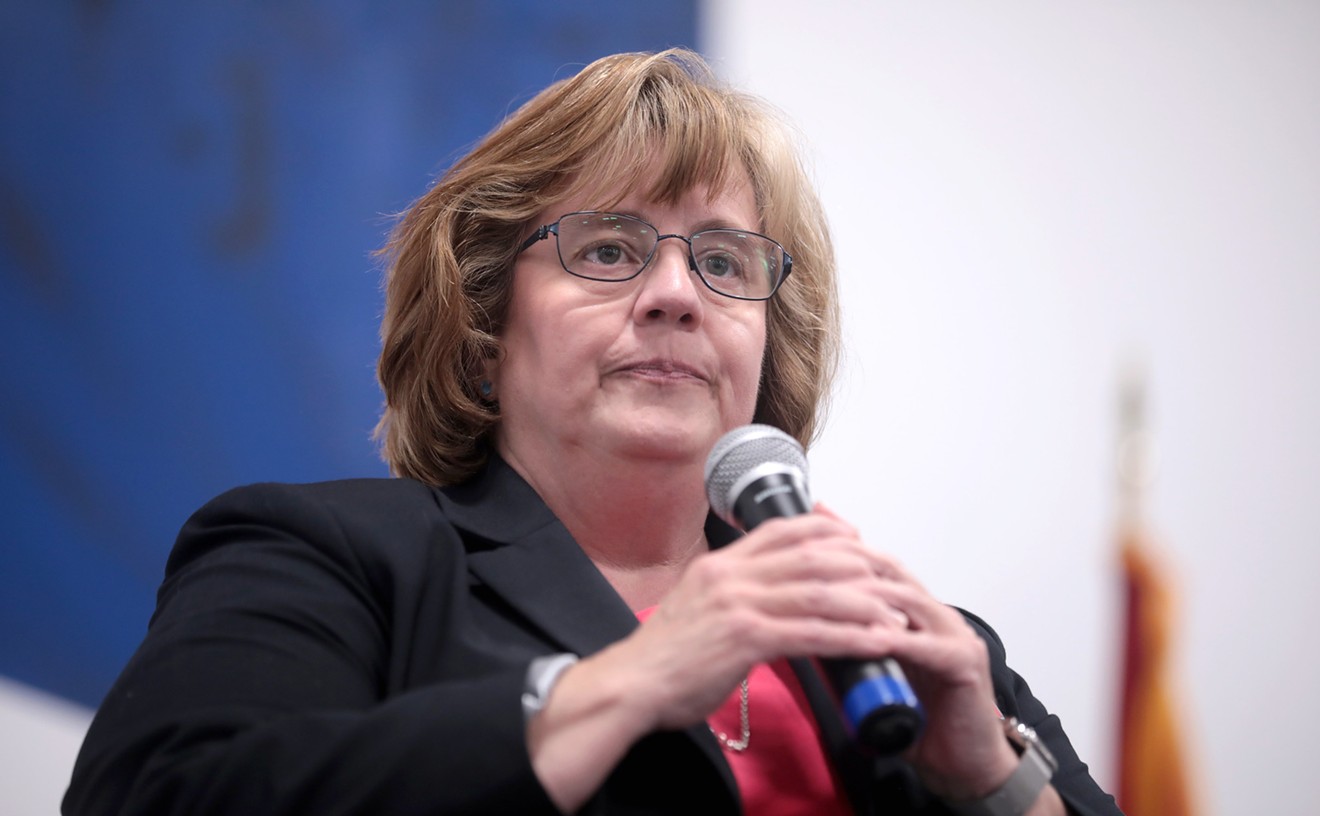After inmate deaths in Maricopa County jails reached new highs during former Sheriff Joe Arpaio's last few years in office, the numbers started trending in the other direction, according to a new analysis of jails nationwide published by Reuters. The change seems to have occurred after Paul Penzone, a Democrat who beat Arpaio in the 2016 election, took over the Maricopa County Sheriff's Office.
Journalists with Reuters, an international news organization, filed "more than 1,500 public record requests" to get data on inmate deaths in the "nation's biggest jails" between the years 2009 and 2019. News reports were also used to identify some deaths that jails did not report to Reuters or to build upon information that was provided. Reuters examined the 10 largest jails in each state with over 750 inmates, making for a total of 523 jails or jail systems. Reuters also released the raw data it compiled from the records it received from jail officials. A host of Arizona jails, including the sprawling, five-jail Maricopa County jail system, are included in the survey.
In Maricopa County jails, it shows, 80 inmates died over the past decade, and the rate of the deaths has fluctuated over the years. Between 2009 and 2012, between three and five people confined to jail died annually. The number of dead inmates jumped to nine the following year, and by 2015 had risen to 11. In 2016, Arpaio's final year as sheriff after six four-year terms, the jails had 10 recorded deaths. The longtime Republican sheriff was known for generating numerous lawsuits for mistreatment of jail inmates, not to mention his discrimination against Latinos, misspending of county funds, and the failure to investigate hundreds of sex crimes properly.
During 2017, Penzone's first year in office, jail fatalities stayed high; 11 inmates died that year. But the annual number of deaths dropped considerably in the following two years. Eight inmates died in 2018, and only five died in 2019. Numbers for 2020 weren't included in the Reuters survey.
It's unclear what, exactly, drove the original surge in inmate deaths or the subsequent decline, or how much of the decrease can be attributed directly to Penzone's management of local jails. And the Maricopa County Sheriff's Office has still come under fire in recent years for its inmate healthcare practices: Earlier this year, the American Civil Liberties Union of Arizona sued the agency for allegedly failing to implement proper COVID-19 protocols inside county jails.
Joel Robbins, a Phoenix-based personal injury lawyer who regularly works on cases involving jail inmate deaths and injury — he levied numerous lawsuits against Arpaio — said that, at least anecdotally, the number of lawsuits involving the Maricopa County jail system has decreased.
"We used to sue Sheriff Arpaio probably dozens of times. And since Penzone came into office, we’ve noticed a significant decline in the jail cases, which is awesome," he said. "I think he’s actually paid attention to trying to increase the quality [of inmate care] and the risk management [staff] is trying to pay attention to the lessons."
When asked for comment on the Reuters' death figures and efforts taken to ensure inmates' safety, Norma Gutierrez-Deorta, a spokesperson for the Maricopa County Sheriff's Office, defended Penzone's handling of the jails and brushed off responsibility for some of the deaths.
"During Sheriff Penzone’s tenure, MCSO has taken dramatic steps to improve the safety and healthcare of our incarcerated population, " Gutierrez-Deorta. "However, we don’t have the ability to prevent death in circumstances outside of our control."
The causes for the deaths reported in Maricopa County jails, though, show some trends. Suicides and "illness" make up the bulk of the deaths, though there were occasional homicides. (The outlier was 2014, when four homicides occurred.) In the peak years of 2015 through 2017, deaths by illness made up the bulk of the year. In 2018, all eight of the inmate deaths in Maricopa County jails were illness-related.
But the data sheds little light on the exact types of illness that are causing inmate deaths in Maricopa County. Grant Smith, a journalist with Reuters who worked on the project, told Phoenix New Times in an email that jail officials provided limited details on what caused illness-related deaths or so-called "natural" deaths. In a handful of cases, exact health conditions were noted, such as a death in 2017 that was attributed to "metastatic adenocarcinoma of the colon." Most of the deaths that were attributed to illness lacked any details.
Donna Leon Hamm, executive director of Middle Ground Prison Reform and a former judge, said that any inmate suicide that occurs behind bars is concerning and shouldn't be shrugged off as unavoidable.
"Most sheriffs consider it [deaths] a cost of doing business," she said. "There’s obviously not enough identification of people who are experiencing suicidal ideation and there’s not enough treatment."
Hamm added that the high number of illness-related deaths could potentially be indicative of poor healthcare provided to inmates and warrants further scrutiny.
"When you look at any death that’s recorded as natural, we always question the real cause of death because a natural death can be a heart attack or cancer, but it could have been preventable if treated," she said. "You always have to take that into account when you’re dealing with a jail or prison that there’s been medical neglect or lack of treatment [in] somewhere along the way."
In defending the county's inmate healthcare, Gutierrez-Deorta detailed some of the steps taken by jail staff to care for inmates, like "health screenings" after inmates are booked and follow-up medical care in jail. Inmate healthcare in Maricopa County jails is provided by county health officials, Gutierrez-Deorta noted. Detention staff are trained and certified every two years in CPR and "receive training in mental health," she said, and supervisors continually meet with medical staff on inmate health issues. Additionally, detention officers perform a "welfare check" in every housing unit every 20 minutes to verify inmates' welfare.
She also noted that in 2019, the sheriff's office was released from federal court oversight in a long-standing lawsuit over the medical and mental healthcare provided to inmates by the jail system.
"With nearly 100,000 bookings per year, the inmate population and their medical needs can be as diverse as the circumstances that brought them into the justice system," Gutierrez-Deorta wrote. "We feel that some of those individuals receive greater medical attention and care ... while in custody than they would receive when not in custody."
The county jail system is one of the largest in the country, with a daily inmate population of between 7,300 and 8,600 in the past decade. Yet when compared to other jails in Arizona, Maricopa County's jail-death rate — which is calculated as deaths per 1,000 inmates — wasn't as high. Prior to 2013, the death rate was below one death per 1,000 inmates. Only between 2013 and 2018 did it rise above one death per 1,000 inmates, and it never breached 2017's death rate of 1.43.
In comparison, the Cochise County Jail in Bisbee logged two inmate deaths in 2019 when it had an average daily inmate population of 256 people that year, giving it a sky-high death rate of 7.82 deaths per 1,000 inmates. Similarly, at the Pima County Adult Detention Complex in Tucson, which reported an average daily population of a little under 2,000 inmates for the last decade, eight inmates died in 2018, giving the jail a death rate of 4.34 deaths per 1,000 inmates that year. The smaller inmate population in Pima County gave it a higher death rate than Maricopa County, which reported the same number of inmate deaths that year but has a much large number of inmates.
Other large jails across the country had death rates that were mostly on-par with the local system. For instance, Maricopa County had higher death rates than the Harris County Jail in Houston in 2011 and 2012, but lower rates than Houston for the next few years.
Notably, in both 2015 and 2016, Maricopa County had a higher death rate than the Los Angeles County jail system, the country's largest jail with an average daily population of over 15,000 inmates in both years.
Robbins said that jails in Arizona that rely on private for-profit companies to provide healthcare services in their facilities tend to produce more preventable inmate deaths and injury.
"Any time you put a profit motive behind a medical decision ... it tends to mess things up," he said. "Some of the jails have a bad record for suicides. Each one has its own flavor of problems, but private medical care seems to increase the problems."
[
{
"name": "Air - MediumRectangle - Inline Content - Mobile Display Size",
"component": "18478561",
"insertPoint": "2",
"requiredCountToDisplay": "2"
},{
"name": "Editor Picks",
"component": "16759093",
"insertPoint": "4",
"requiredCountToDisplay": "1"
},{
"name": "Inline Links",
"component": "17980324",
"insertPoint": "8th",
"startingPoint": 8,
"requiredCountToDisplay": "7",
"maxInsertions": 25
},{
"name": "Air - MediumRectangle - Combo - Inline Content",
"component": "16759092",
"insertPoint": "8th",
"startingPoint": 8,
"requiredCountToDisplay": "7",
"maxInsertions": 25
},{
"name": "Inline Links",
"component": "17980324",
"insertPoint": "8th",
"startingPoint": 12,
"requiredCountToDisplay": "11",
"maxInsertions": 24
},{
"name": "Air - Leaderboard Tower - Combo - Inline Content",
"component": "16759094",
"insertPoint": "8th",
"startingPoint": 12,
"requiredCountToDisplay": "11",
"maxInsertions": 24
}
]












